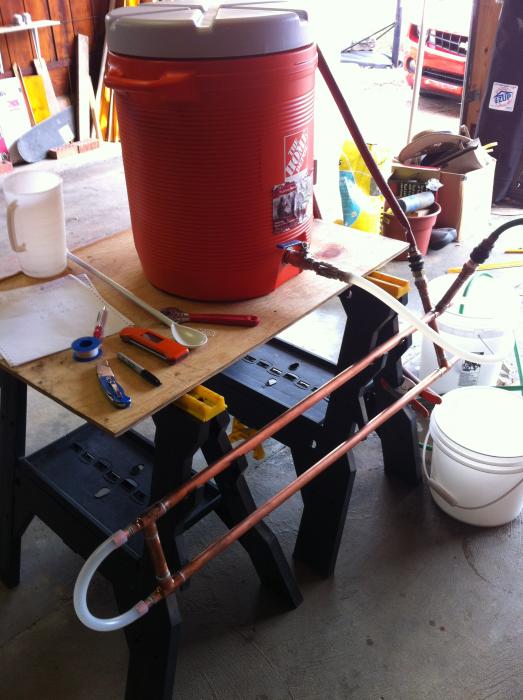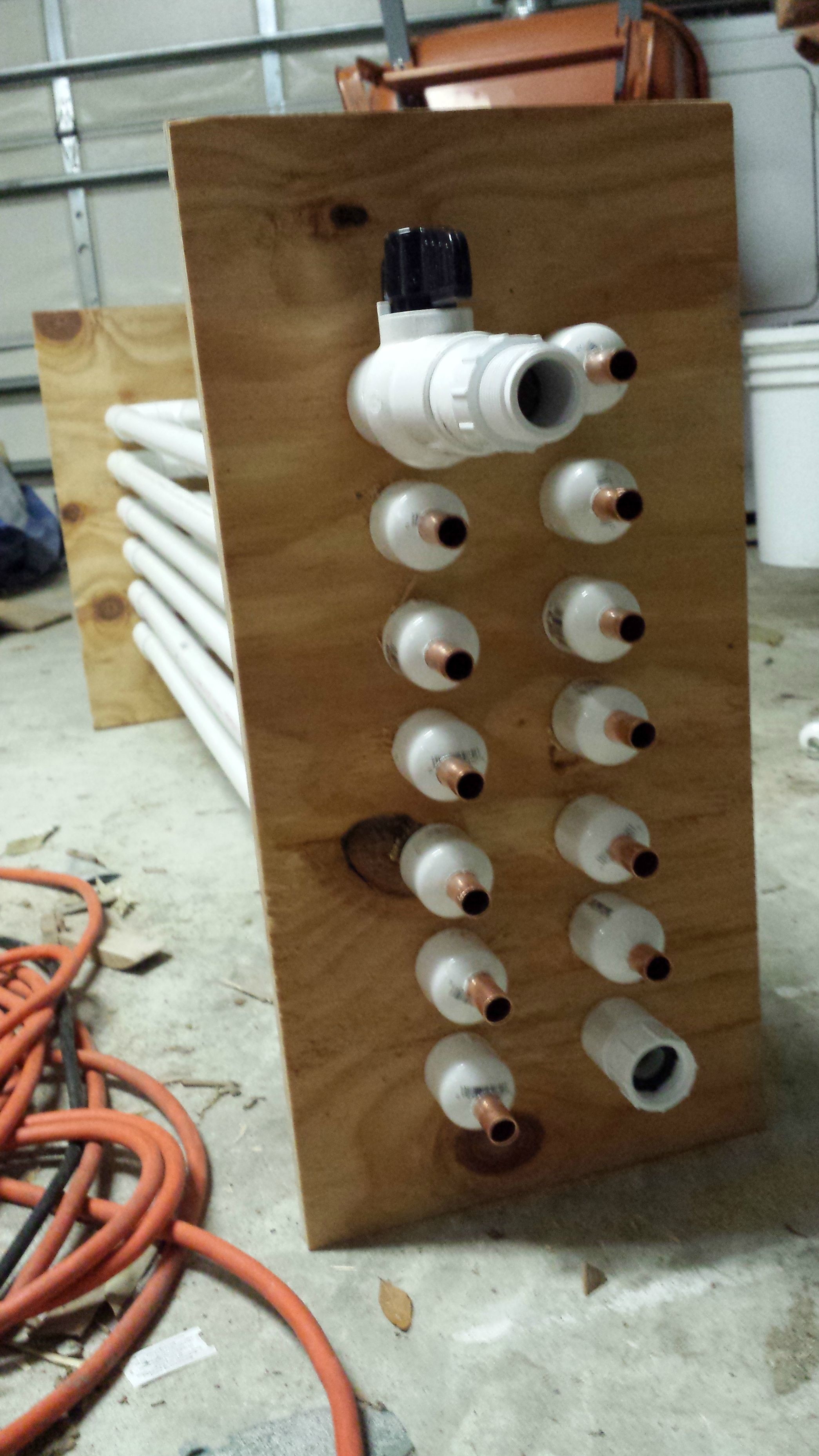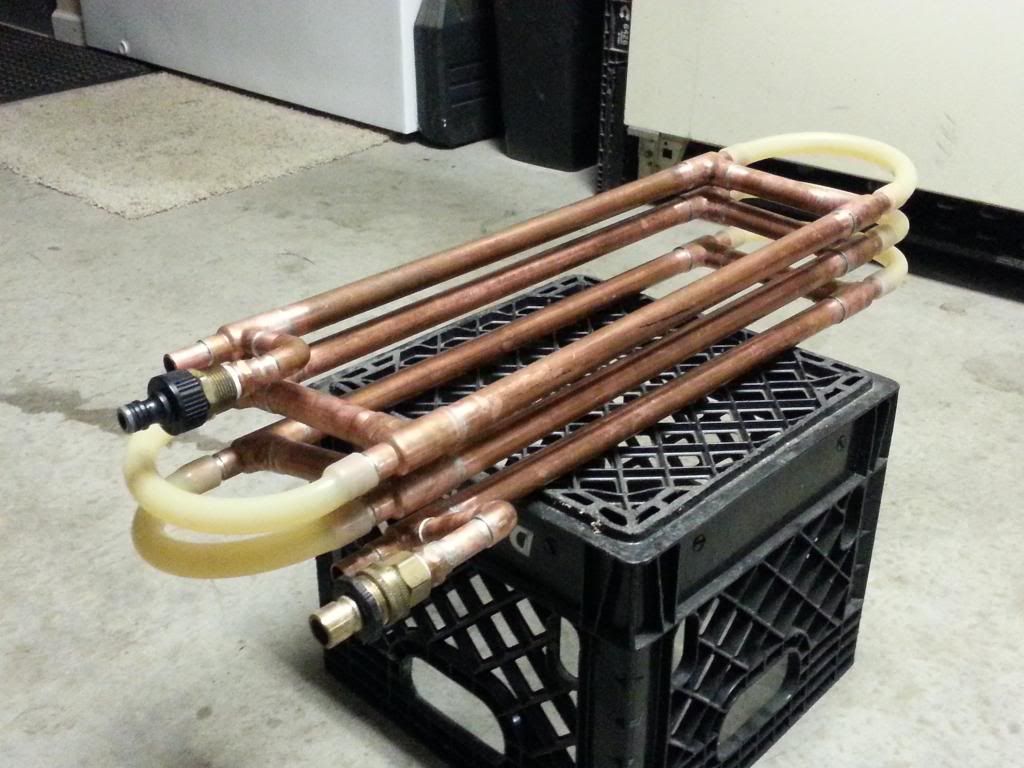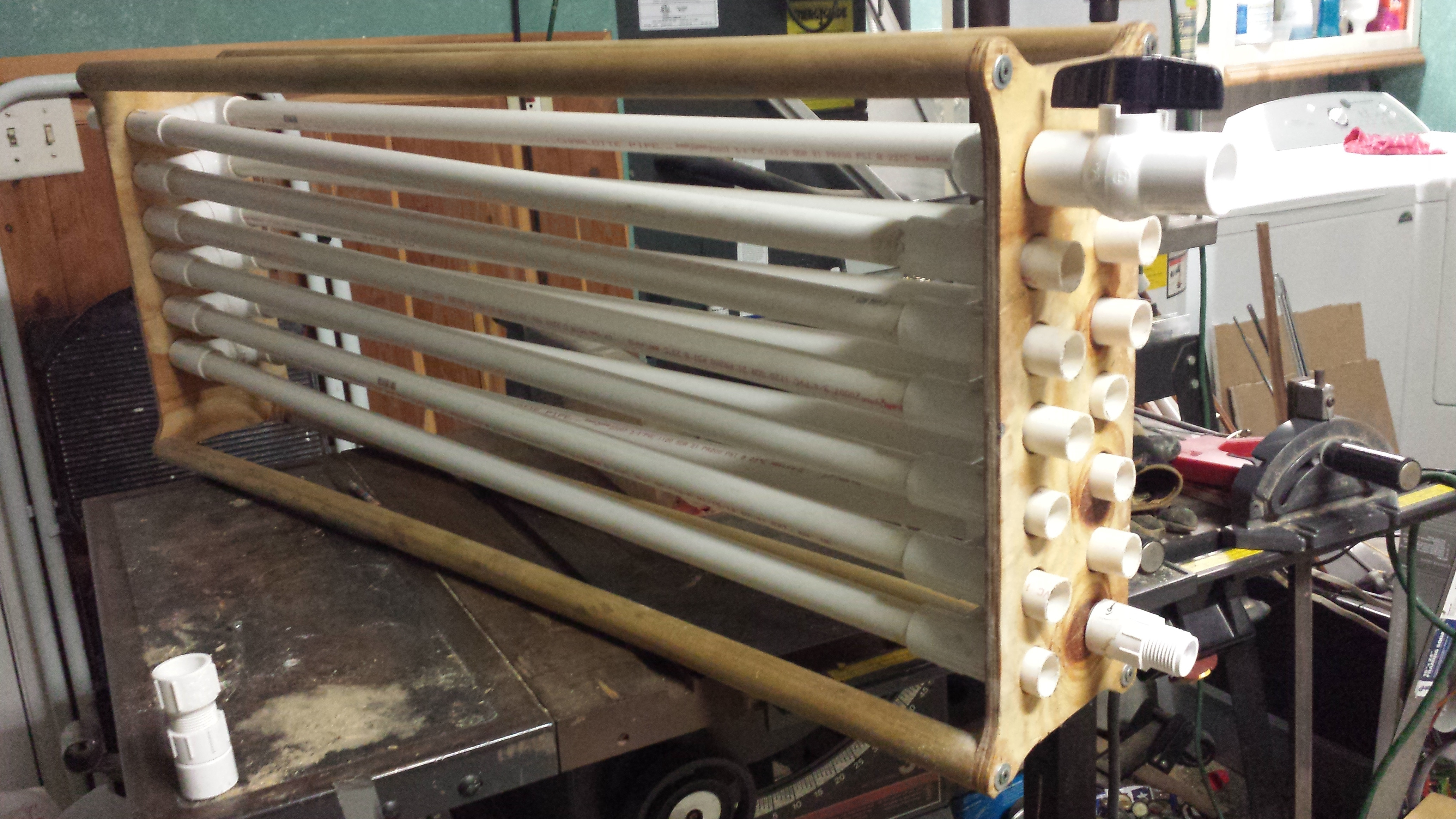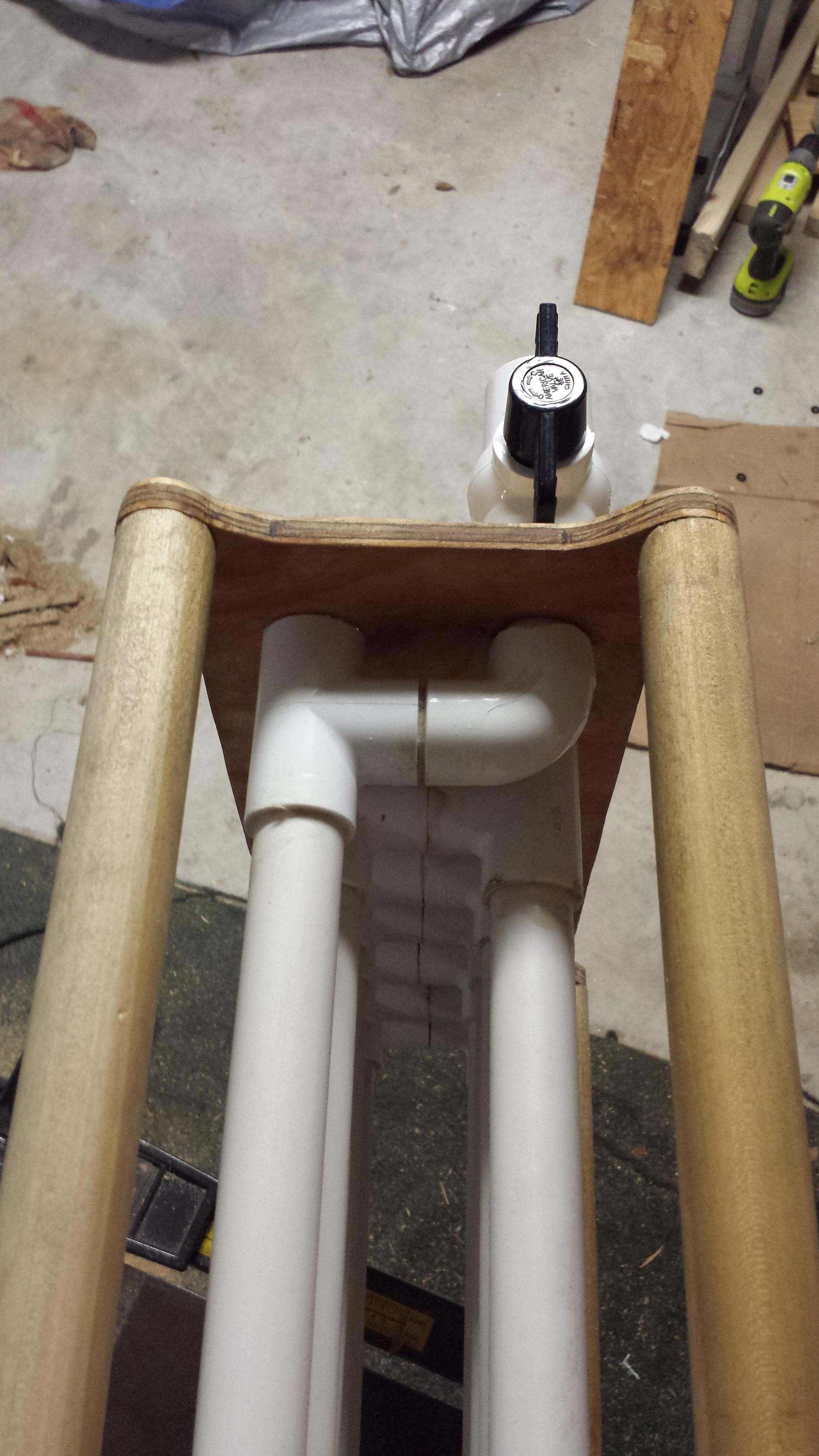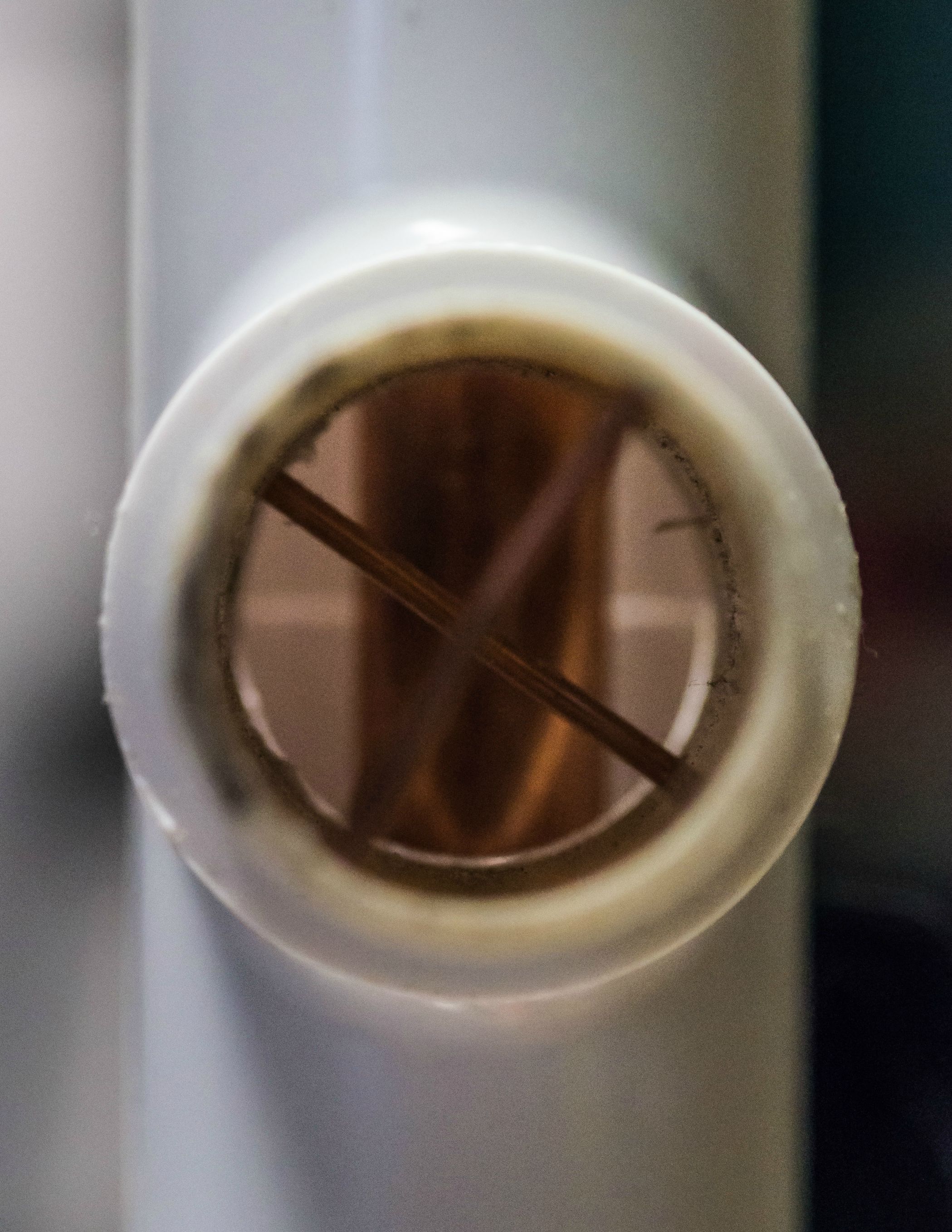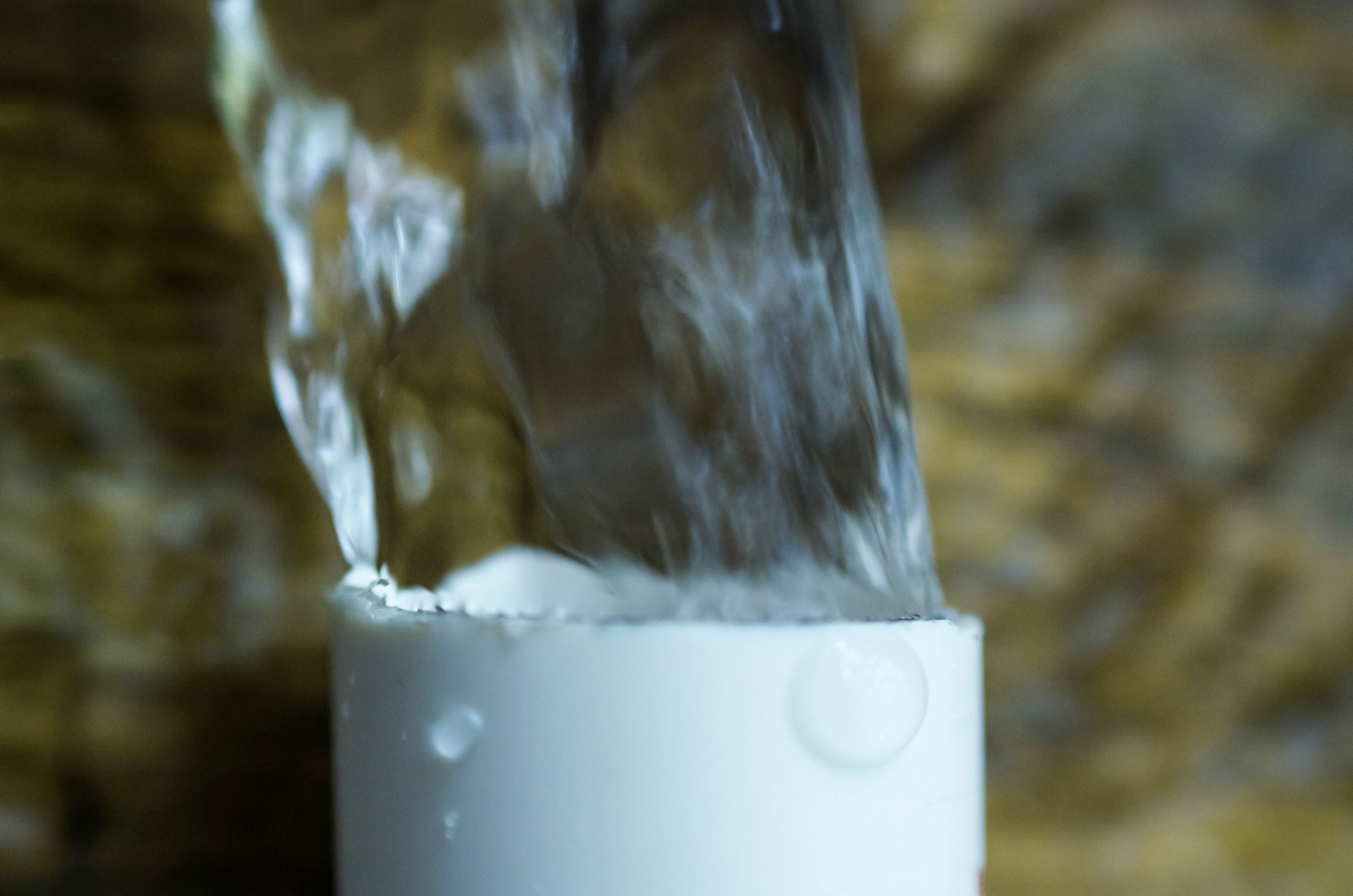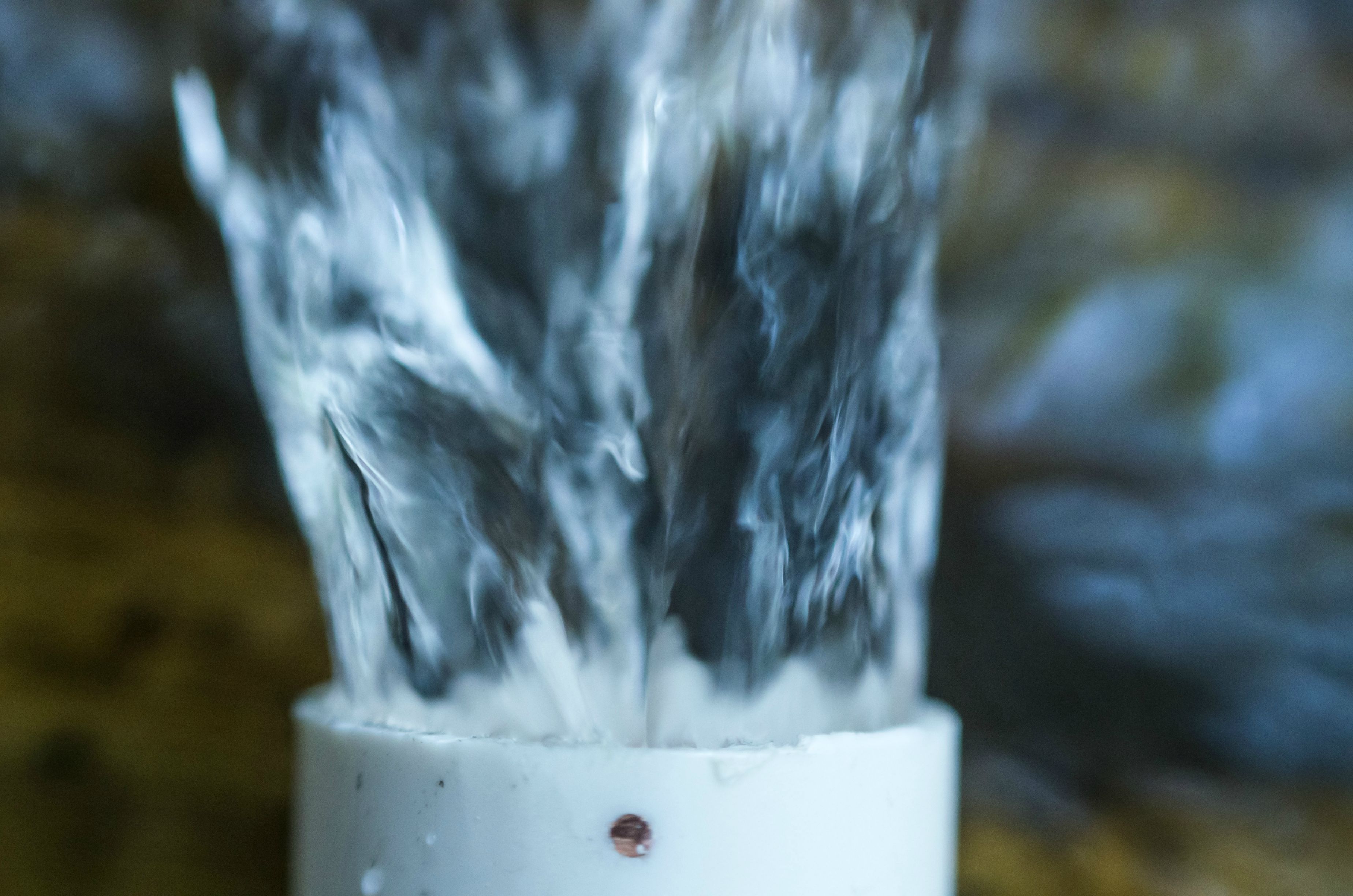I really want to make a double pipe wort chiller like in Jaded Brewing CFC
I found the BYO article that talks about calculating the efficiency and had some questions about the formulas.
I emailed BYO last week but no response yet, so I'll try here.
I wanted to make sure I was estimating the values correctly in a spreadsheet I was putting together.
I wanted to know where the article of BYO got the values they used for:
1. An average of 0.9 cooling efficiency
2. U (overall heat transfer) = 7.56 BTU/min Ft2 °F (Upper end of here?)
3. LMTD (log mean temperature differential) = 37 °F (3 °C)
4. Cp is the specific heat of wort (about 0.95). (From 2006 Article)
I've looked:
http://www.online-pdh.com/engcourses/file.php/177/Heat_Exchangers.pdf
http://www.brighthubengineering.com...-heat-exchanger-design-calculations-involved/
One from MIT but I couldn't follow some of it:
http://web.mit.edu/16.unified/www/SPRING/propulsion/notes/node131.html
Overall Heat Transfer Coefficient, U:
http://www.engineeringtoolbox.com/overall-heat-transfer-coefficient-d_434.html
Another good one:
http://www.tlv.com/global/TI/steam-theory/overall-heat-transfer-coefficient.html
this one has a U value for forced water cooling:
http://www.engineeringtoolbox.com/overall-heat-transfer-coefficient-d_434.html
This one has the thermal conductivity of copper and water:
http://www.engineeringtoolbox.com/thermal-conductivity-d_429.html
LMTD calculator but it didn't match BYO
http://checalc.com/solved/lmtd.html
Difference between Specific Heat and Heat capacity:
http://www.iun.edu/~cpanhd/C101webnotes/matter-and-energy/specificheat.html
Specific Heat Capacity calculator:
http://www.calculator.org/property.aspx?name=specific+heat+capacity
This post helped but I'm still trying to compare some of the equations.
https://www.homebrewtalk.com/f13/convoluted-chiller-wont-chill-437581/index2.html#post5681293
I like the looks of this but wanted it shorter.
https://www.homebrewtalk.com/f51/byo-double-pipe-wort-chiller-428922/index3.html#post5590786
Here is a link to an excel spreadsheet that is messy right now but it has three different pages where I have tried to make sense of all of this.
https://drive.google.com/file/d/0B3IXnGfupr85bUFFWDF2WVFUT0U/edit?usp=sharing
Any Help explaining it would be appreciated. My Head HURTS!
I found the BYO article that talks about calculating the efficiency and had some questions about the formulas.
I emailed BYO last week but no response yet, so I'll try here.
I wanted to make sure I was estimating the values correctly in a spreadsheet I was putting together.
I wanted to know where the article of BYO got the values they used for:
1. An average of 0.9 cooling efficiency
2. U (overall heat transfer) = 7.56 BTU/min Ft2 °F (Upper end of here?)
3. LMTD (log mean temperature differential) = 37 °F (3 °C)
4. Cp is the specific heat of wort (about 0.95). (From 2006 Article)
I've looked:
http://www.online-pdh.com/engcourses/file.php/177/Heat_Exchangers.pdf
http://www.brighthubengineering.com...-heat-exchanger-design-calculations-involved/
One from MIT but I couldn't follow some of it:
http://web.mit.edu/16.unified/www/SPRING/propulsion/notes/node131.html
Overall Heat Transfer Coefficient, U:
http://www.engineeringtoolbox.com/overall-heat-transfer-coefficient-d_434.html
Another good one:
http://www.tlv.com/global/TI/steam-theory/overall-heat-transfer-coefficient.html
this one has a U value for forced water cooling:
http://www.engineeringtoolbox.com/overall-heat-transfer-coefficient-d_434.html
This one has the thermal conductivity of copper and water:
http://www.engineeringtoolbox.com/thermal-conductivity-d_429.html
LMTD calculator but it didn't match BYO
http://checalc.com/solved/lmtd.html
Difference between Specific Heat and Heat capacity:
http://www.iun.edu/~cpanhd/C101webnotes/matter-and-energy/specificheat.html
Specific Heat Capacity calculator:
http://www.calculator.org/property.aspx?name=specific+heat+capacity
This post helped but I'm still trying to compare some of the equations.
https://www.homebrewtalk.com/f13/convoluted-chiller-wont-chill-437581/index2.html#post5681293
I like the looks of this but wanted it shorter.
https://www.homebrewtalk.com/f51/byo-double-pipe-wort-chiller-428922/index3.html#post5590786
Here is a link to an excel spreadsheet that is messy right now but it has three different pages where I have tried to make sense of all of this.
https://drive.google.com/file/d/0B3IXnGfupr85bUFFWDF2WVFUT0U/edit?usp=sharing
Any Help explaining it would be appreciated. My Head HURTS!



